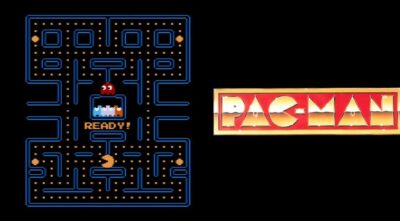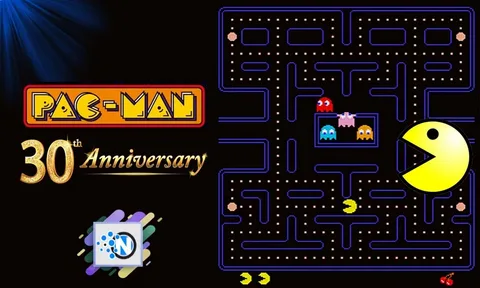In 2010, the world of video games celebrated a landmark milestone — the 30th anniversary of Pac-Man. Since its debut in 1980, Pac-Man has transcended
In 2010, the world of video games celebrated a landmark milestone — the 30th anniversary of Pac-Man. Since its debut in 1980, Pac-Man has transcended the boundaries of arcade gaming, becoming a beloved pop culture icon and one of the most influential video games of all time. Over the course of three decades, Pac-Man has entertained millions across the globe, inspired countless spin-offs, and cemented its place in gaming history.
This article takes an in-depth look at the origins of Pac-Man, its cultural significance, the celebrations marking its pacman 30th anniversary, and why it remains relevant in today’s fast-evolving gaming landscape. Additionally, a FAQ section at the end answers some of the most commonly asked questions about this legendary game.
Must visit: experttrading

The Origin Story of Pac-Man
To fully appreciate the significance of the 30th anniversary, it’s essential to understand how pacman 30th anniversary came into existence. In the late 1970s, arcade games primarily focused on space shooters and sports simulations. Toru Iwatani, a young game designer working for Namco in Japan, sought to create a game that could appeal to a broader demographic, especially female players who were underrepresented in the gaming community.
Inspired by a pizza with a missing slice, Iwatani designed a simple, friendly character that could navigate a maze while eating pellets. Released in Japan in May 1980, and later in the U.S. in October 1980 by Midway, Pac-Man quickly became a sensation. Its gameplay was unlike anything gamers had experienced — non-violent, strategic, and accessible.
Why Pac-Man Was Revolutionary
Pac-Man introduced several innovative ideas that revolutionized arcade gaming:
- Character-driven gameplay: Unlike abstract shapes or spaceships, Pac-Man 30th anniversary featured a relatable, expressive character that players could identify with.
- Appeal to all ages and genders: By avoiding violence and focusing on maze navigation and strategic play, Pac-Man attracted a diverse audience.
- Catchy audio and memorable design: The game’s sound effects and colorful ghosts became instantly recognizable.
- Increasing challenge: The AI behavior of the ghosts and the progressively difficult levels kept players engaged.
This formula made Pac-Man a massive commercial success, becoming the highest-grossing arcade game of the 1980s.
The Cultural Impact of Pac-Man
The influence of Pac-Man extended far beyond arcade cabinets. The character became a pop culture phenomenon:
- Merchandise: From toys and lunchboxes to clothing and board games, Pac-Man merchandise flooded the market.
- Television: The 1982 animated series “Pac-Man” brought the characters and their adventures into living rooms worldwide.
- Music: Pac-Man inspired novelty songs and appeared in music videos.
- Advertising and Crossovers: The character made cameo appearances in various media and even in other video games, solidifying its status as a gaming mascot.
Celebrating the 30th Anniversary of Pac-Man
By 2010, Pac-Man had achieved a legendary status. The 30th anniversary was an opportunity to honor this legacy and reintroduce the classic game to new generations. The celebrations took many forms:
1. Special Game Releases and Remakes
Namco released several commemorative editions and new games inspired by Pac-Man’s classic gameplay but designed for modern platforms. Notable releases around this time included:
- Pac-Man Championship Edition DX: A visually enhanced, fast-paced update with new mazes and gameplay mechanics.
- Mobile adaptations: Optimized versions for smartphones and tablets allowed players to enjoy Pac-Man on the go.
- Pac-Man Party: A party-style game for consoles that introduced multiplayer fun.
2. Merchandise and Collectibles
The 30th anniversary sparked a wave of limited-edition collectibles, including:
- Retro-themed apparel
- Figurines and statues of Pac-Man and the ghosts
- Commemorative art books chronicling the history and impact of the game
3. Exhibitions and Events
Museums and gaming conventions hosted exhibits showcasing the history of Pac-Man, the design process behind the game, and its role in shaping the video game industry. These events attracted longtime fans and newcomers alike.
4. Social Media and Online Celebrations
With social media firmly established by 2010, Namco and gaming communities worldwide used platforms like Twitter, Facebook, and YouTube to share memories, playthroughs, and fan art celebrating Pac-Man.
The Enduring Legacy of Pac-Man: Why It Still Matters
More than 30 years after its release, Pac-Man remains an enduring symbol of the gaming world. Here’s why:
Timeless Gameplay
The core mechanics of Pac-Man—maze navigation, pellet collection, and ghost avoidance—remain engaging. It’s easy to pick up yet challenging to master, striking a perfect balance that keeps players coming back.
Nostalgia and Cultural Recognition
For many, Pac-Man evokes fond memories of childhood or early gaming experiences. Its instantly recognizable characters and sound effects continue to be referenced in media and entertainment.
Evolution and Innovation
Pac-Man has not remained static. Over the years, the franchise has evolved, spawning sequels and spin-offs that incorporate new gameplay styles, such as multiplayer modes, 3D mazes, and puzzle elements.
Inspiration to Developers
Many game designers credit Pac-Man as a major influence, pointing to its success in combining simple design with complex AI and engaging play. Its legacy paved the way for character-driven games and creative, non-violent gameplay experiences.
How Pac-Man Shaped Modern Gaming
The impact of Pac-Man extends deeply into the DNA of modern video games. It was one of the first games to prove that characters could be more than just avatars; they could be mascots with personality and broad appeal. The game’s success demonstrated the importance of accessibility and design that appeals to a wide demographic, principles that are vital in today’s diverse gaming landscape.
Moreover, the AI of the ghosts was one of the earliest examples of enemy behavior programmed with distinct patterns and personalities, inspiring the way NPCs behave in countless modern games.
Pac-Man Today: Continuing the Journey
As of the 30th anniversary and beyond, Pac-Man continues to thrive:
- New releases on current consoles and mobile devices keep the gameplay fresh.
- Appearances in crossover titles such as Super Smash Bros. maintain the character’s relevance.
- Modern iterations like Pac-Man 256 innovate on the original formula by introducing endless gameplay and new challenges.
- Pac-Man-themed events, tournaments, and speedrunning communities continue to keep the game alive and competitive.
Frequently Asked Questions (FAQs)
Q1: When was Pac-Man first released?
Pac-Man was initially released in Japan by Namco in May 1980 and later in North America in October 1980.
Q2: Who created Pac-Man?
The game was created by Toru Iwatani, a game designer at Namco.
Q3: What made Pac-Man different from other arcade games at its time?
Unlike the prevalent shooting or sports games, Pac-Man offered a non-violent, maze-chase experience with an engaging character and appealing gameplay accessible to all ages and genders.
Q4: Who are the ghosts in Pac-Man and what are their personalities?
There are four ghosts: Blinky (red) aggressively chases Pac-Man; Pinky (pink) tries to ambush; Inky (cyan) is unpredictable, and Clyde (orange) wanders randomly.
Q5: How was the 30th anniversary of Pac-Man celebrated?
The anniversary featured new game releases, special merchandise, exhibitions, and online fan celebrations worldwide.
Q6: Why is Pac-Man considered a cultural icon?
Its widespread appeal, memorable characters, and influence on gaming and pop culture have made Pac-Man a symbol recognized beyond gaming circles.
Q7: Does Pac-Man still have a fanbase today?
Yes, Pac-Man enjoys a loyal fanbase, ongoing game releases, and presence in popular culture, ensuring it remains relevant decades after its debut.
Conclusion
The 30th anniversary of Pac-Man was more than just a celebration of a classic arcade game—it was a tribute to a cultural phenomenon that helped shape the future of video gaming. From humble beginnings as a maze-chase game designed to appeal to a broad audience, Pac-Man evolved into a timeless icon cherished by millions around the world.
Its simple yet captivating gameplay, memorable characters, and far-reaching influence continue to inspire developers and entertain players today. As we celebrate Pac-Man’s 30 years and beyond, it’s clear that this yellow circle will keep chomping pellets and evading ghosts for generations to come.



COMMENTS